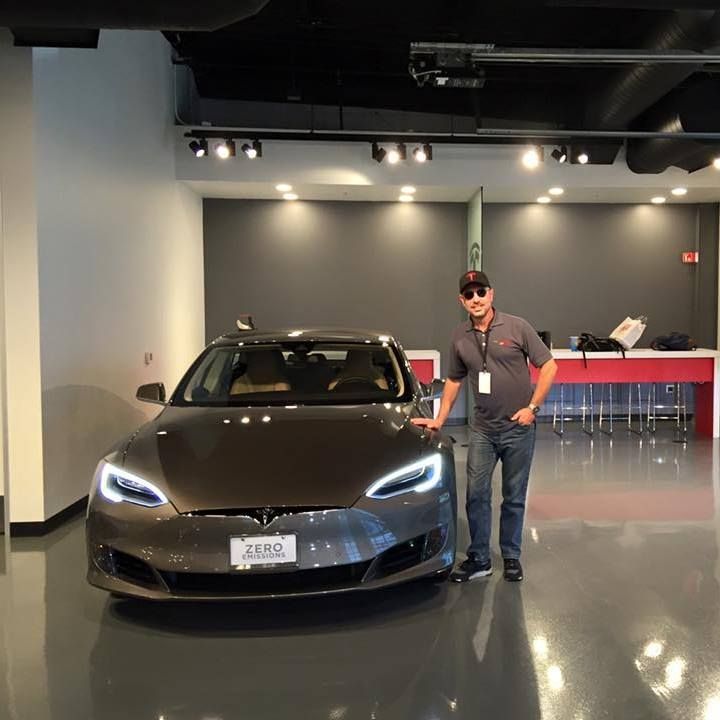
As a Tesla driver and longtime electric / autonomous vehicle advocate the recent report of an autopilot associated death in Florida has had me thinking. Ironically, this accident makes it clear that Elon Musk will be the winner in autonomous driving while Google and Apple are burning money on a misguided development model. Tesla Does Autonomous Driving Right
As a modern educator in innovation and entrepreneurship, I teach the model formalized by Eric Ries in his 2008 classic, The Lean Startup. Business schools belatedly came to recognize that developing a fully mature product in a secret laboratory and then launching it with an elegant business plan also crafted in secret is a formula for burning venture capital. We now teach founders to identify a customer “pain point”, apply a suitable technology and move swiftly to get some (relatively) inexpensive Minimal Viable Product (MVP) into the hands of real customers. By doing this the entrepreneur establishes a market presence and collects valuable information on what works and what doesn’t both from a technical and an economic standpoint. This allows for a process of iterative innovation funded by and informed by actual products operating in the real world in the hands of real users.
Elon Musk has long been the model entrepreneur for this MVP approach with demonstrated success in diverse markets. With PayPal he managed to get a minimal set of electronic banking tools into the hands of millions of consumers before most retail banks were even aware that ecommerce was a thing. With SpaceX he was able to leverage a small rocket (Falcon 1) into a valuable supplier relationship with NASA and establish a multibillion $ space launch services business. In joining Tesla Motors Musk saw the opportunity to get a real electric car on the road quickly by electrifying a glider (car minus drive train) produced by Lotus Cars rather than starting from scratch. In each of these cases the MVP was far from Musk’s final vision, but each of them was a revolutionary product that delivered value to real customers, collected technical and market data and established his firm as a contender in its respective field. Musk is now approaching the promising field of autonomous vehicles with the same pragmatism. This is the smartest business strategy as well as the safest technical path toward the final goal of a driverless car. Meanwhile, his competitors seem to be preoccupied with the 1985 model of innovation.
There are two ways to develop a driverless car. The first approach, pursued by several new startups as well as tech giants Google and Apple, is to create fully self-driving technology in secret and to quietly test it in the real world with several prototype vehicles. Google is publicly driving a small fleet of bizarre little self-driving cars and modified Lexus SUVs around city streets and learning from a dozen accidents, the vast majority of them the other car’s fault. Apple is apparently secretly testing software on existing Dodge and Ford vans and hasn’t publicly revealed anything. That’s one way to get the software to a basically functional level.
Both firms also understand product design from a style perspective. The Google car seems to be intentionally emasculating. Apple’s vehicle will surely feature a modish Jony Ive design. The thing is that neither firm has any experience in working with dozens of moving parts that will need to perform over thousands of miles. Building the actual car seems to be sort of an afterthought for these tech focused companies. Based on their business histories and the rumor mill, I presume Google will license their tech out to Asian producers and Apple will offshore production to partners it seems to be lining up in China. The untested market assumption is that since the American public is always eager to save a few bucks on personal electronics, they will also strap their kids into some generic Made in China smart car bearing a popular logo. That is the kind of self-delusion only Silicon Valley can manufacture, and lately it’s the only thing they manufacturer in America.
Finally, these firms seem to seriously be under the misapprehension that they are going to release computer controlled vehicles into the world and “see what happens.” Hmm . . . let us assume that our Silicon Valley programmers get the fundamental mechanics of self-driving down perfect and their cars are better than humans at negotiating roads and quickly avoiding other vehicles. They will save thousands of lives that might otherwise be lost in accidents caused by driver negligence. That’s great, but it’s a huge leap from there to successful contextual driving. Contextual driving is operating a vehicle based on an understanding of what is going on around you, anticipating problems in advance using things like your innate knowledge of social behavior. Yes, social behavior counts in driving!
Picture a group of young men skateboarding on the sidewalk ahead of your car. You can tell from their body language that they are lining up to ollie the curb and will likely land on their faces in the street. You slow your car in advance because you understand the irrational nature of teenage boys. Would the hypothetical Apple car? Despite is GPS, cameras and Lidar, such a vehicle remains clueless until a kid hits the pavement directly in front of it, when it must depend entirely on its superior reflexes to stop. Is Google’s car going to be able to recognize a blind person, avoid a drunk driver or notice that the lady two cars ahead is applying mascara while driving? The point is that even when used as instructed unattended self-driving cars will cause accidents that would have been avoided by any reasonable human. Governments will shut that model down swiftly. It will be years, if not decades before a regulatory regime and licensing process for fully robo-cars is established. Given the way the FAA has been handling UAVs no smart investor would back that plan.
Meanwhile, Musk is taking the smarter, incremental / MVP approach to the development of self-driving technology. Tesla has a solid vehicle platform already in production and in high demand. Tens of thousands of Model S and X drivers (myself included) are racking up millions of miles and feeding the firm’s engineers valuable real world data. By implementing a minimal autopilot feature that is just one step ahead of adaptive cruise control (auto speed control offered on many cars) and clearly intended to be used only under constant driver supervision, Tesla eschewed dangerously pushing the envelope. In doing so they avoided the need for a new regulatory regime and were also able to implement a lifesaving collision avoidance system.
While the recent fatal crash in Florida was tragic, the evidence I have seen clearly suggests that the responsibility for this accident lays with a truck driver who pulled in front of a Model S traveling predictably on a highway and a driver who was probably not, despite Tesla’s clear instructions and warnings, paying proper attention to the road. Similar incidents occur all the time with cruise control and the appropriate regulatory action has been and remains simply educating and ticketing drivers who are not paying attention to the road. Tesla’s car, even after this accident, has proven to be far safer per mile on or off of autopilot. The firm will use this sad data point to further improve their autopilot function and perhaps protect even negligent drivers from each other.
That is the nature of iterative innovation. It will make all of us safer and it will make Tesla money while Google and Apple burn cash. Meanwhile Musk’s Silicon Valley competitors seriously seem to think that they are going to continue testing with engineers and then release their fully self-driving Terminator-cars to the public. I wouldn’t bet on that plan nor invest in it.
